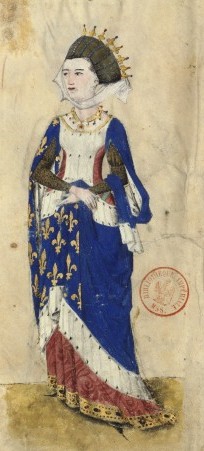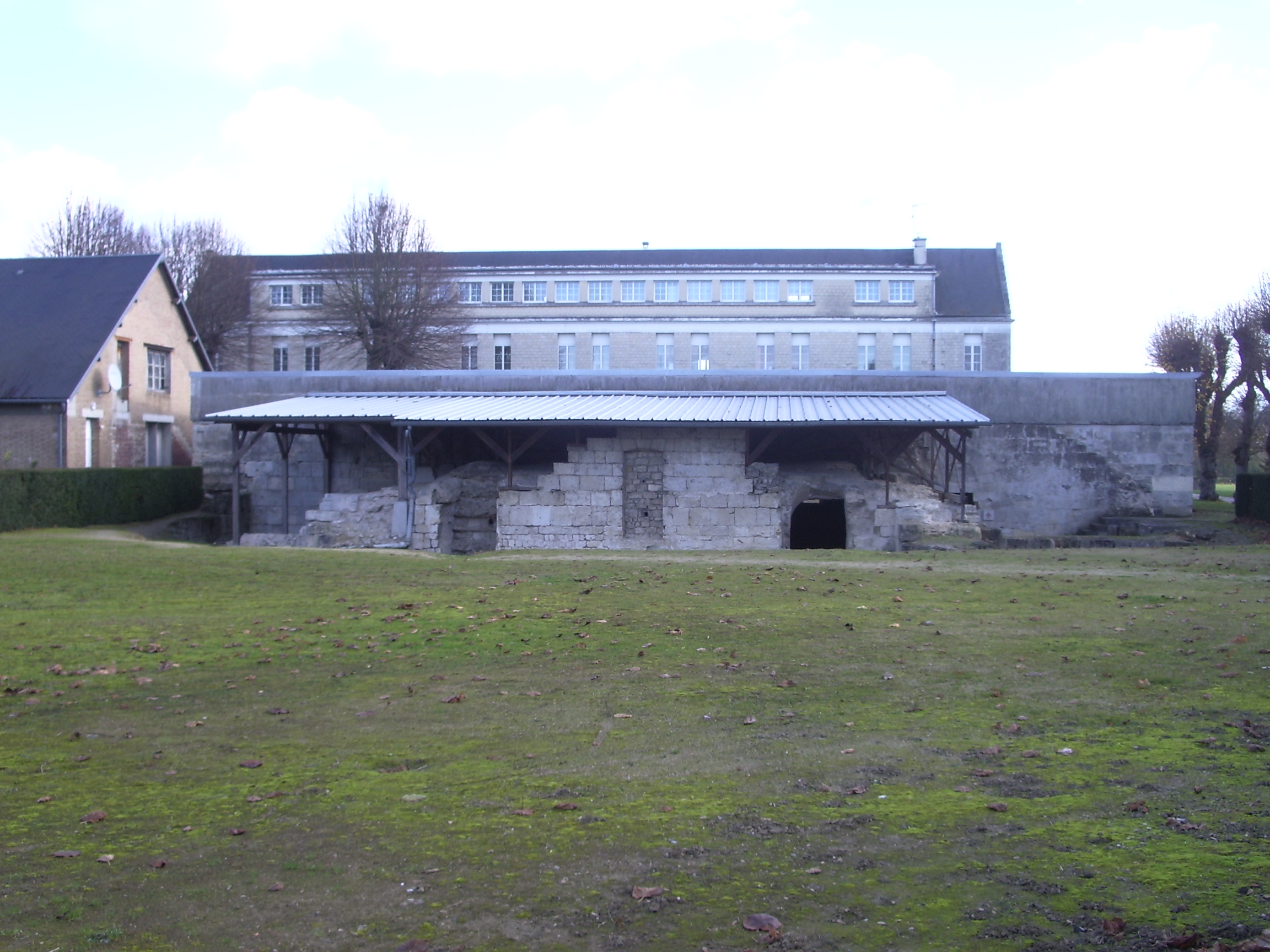|
Bertha Of Holland
Bertha of Holland ( 1055 – 15 October 1094), also known as Berthe or Bertha of Frisia and erroneously as Berta or Bertrada, was Queen of France from 1072 until 1092, as the first wife of King Philip I of France. Bertha's marriage to the king in 1072 was a result of peace negotiations between him and her stepfather, Count Robert I of Flanders. After nine years of childlessness, the royal couple had three children, including Philip's successor, Louis VI. Philip, however, grew tired of his wife by 1090, and repudiated her in 1092 in order to marry the already married Bertrade of Montfort. That marriage was a scandal since both Philip and Bertrade were already married to other people, at least until Queen Bertha died the next year. Early life Bertha was the daughter of Count Floris I of Holland and Gertrude of Saxony.William (of Malmesbury), ''Gesta Regum Anglorum: The History of the English Kings: General introduction and commentary'', Volume 2, Roger Aubrey Baskerville Mynors, ... [...More Info...] [...Related Items...] OR: [Wikipedia] [Google] [Baidu] |
Queen Consort Of The Franks
This is a list of the women who have been Queens consort of the Frankish people. As all monarchs of the Franks have been required by law and tradition to be male, there has never been a Queen regnant of the Franks (although some women have governed as regents). A timeline of consorts Frankish rulers is difficult since the realm was, according to old Germanic practice, frequently divided among the sons of a leader upon his death and then eventually reunited. Another factor is the practice of polygamy in the Frankish society, and it is unclear who was a concubine, a mistress, or a legal wife. Most of early Merovingian queens are nothing but names, and almost nothing is known about them. This list starts from the earliest dates of Frankish history from the early Queen of the Salian Franks, to Saint Clotilde, the first Queen of All the Franks, until the three-way split up of the Frankish Empire in the Treaty of Verdun in 843 and then from there to the rise of Hugh Capet in West ... [...More Info...] [...Related Items...] OR: [Wikipedia] [Google] [Baidu] |
County Of Flanders
The County of Flanders was a historic territory in the Low Countries. From 862 onwards, the counts of Flanders were among the original twelve peers of the Kingdom of France. For centuries, their estates around the cities of Ghent, Bruges and Ypres formed one of the most affluent regions in Europe. Up to 1477, the area under French suzerainty was west of the Scheldt and was called "Royal Flanders" (Dutch: ''Kroon-Vlaanderen'', French: ''Flandre royale''). Aside from this, the counts, from the 11th century onward, held land east of the river as a fief of the Holy Roman Empire: "Imperial Flanders" (''Rijks-Vlaanderen'' or ''Flandre impériale''). Part of the Burgundian Netherlands from 1384, which had a complex relation with France, the whole county fell to the Empire after the Peace of Madrid in 1526 and the Peace of the Ladies in 1529. Having already regained much, by 1795, the rest – within the Austrian Netherlands – was acquired likewise by France under the Frenc ... [...More Info...] [...Related Items...] OR: [Wikipedia] [Google] [Baidu] |
House Of Capet
The House of Capet (french: Maison capétienne) or the Direct Capetians (''Capétiens directs''), also called the House of France (''la maison de France''), or simply the Capets, ruled the Kingdom of France from 987 to 1328. It was the most senior line of the Capetian dynasty – itself a derivative dynasty from the Robertians. Historians in the 19th century came to apply the name "Capetian" to both the ruling house of France and to the wider-spread male-line descendants of Hugh Capet ( 939 – 996). Contemporaries did not use the name "Capetian" (see House of France). The Capets were sometimes called "the third race of kings" (following the Merovingians and the Carolingians). The name "Capet" derives from the nickname (of uncertain meaning) given to Hugh, the first Capetian king. For discussion of the name ''Capet'', see the article on Hugh Capet. The direct line of the House of Capet came to an end in 1328, when the three sons of Philip IV (reigned 1285–1314) all faile ... [...More Info...] [...Related Items...] OR: [Wikipedia] [Google] [Baidu] |
Childlessness
Childlessness is the state of not having children. Childlessness may have personal, social or political significance. Childlessness, which may be by choice or circumstance, is distinguished from voluntary childlessness, which is voluntarily having no children, and from antinatalism, wherein childlessness is promoted. Types Types of childlessness can be classified into several categories: * ''natural sterility'' randomly affects individuals. One can think of it as the minimum level of permanent childlessness that we can observe in any given society, and is of the order of 2 percent, in line with data from the Hutterites, a group established as the demographic standard in the 1950s. * ''social sterility'', which one can also call poverty driven childlessness, or endogenous sterility, describes the situation of poor women whose fecundity has been affected by poor living conditions. * people who are childless by circumstance. These people can be childless because they have not met ... [...More Info...] [...Related Items...] OR: [Wikipedia] [Google] [Baidu] |
Arnulf Of Soissons
Arnold (Arnoul) of Soissons or Arnold or Arnulf of Oudenburg (c. 1040–1087) is a saint of the Catholic Church, the patron saint of hop-pickers, Belgian brewers. Biography Arnold, born in Brabant, the son of a certain Fulbertus was first a career soldier before settling at the Benedictine St. Medard's Abbey, Soissons, France. He spent his first three years as a hermit, but later rose to be abbot of the monastery. His hagiography states that he tried to refuse this honor and flee, but was forced by a wolf to return. He then became a priest and in 1080, bishop of Soissons, another honor that he sought to avoid. When his see was occupied by another bishop, rather than fighting, he took the opportunity to retire from public life, founding the Abbey of St. Peter in Oudenburg. As abbot in Oudenburg, Arnold brewed beer, as essential in medieval life as water. He encouraged local peasants to drink beer, instead of water, due to its "gift of health". During the process of brewing t ... [...More Info...] [...Related Items...] OR: [Wikipedia] [Google] [Baidu] |
Abbey Of Saint-Médard De Soissons
The Abbey of Saint-Médard de Soissons was a Benedictine monastery, at one time held to be the greatest in France.Goyau, Georges. "Soissons." The Catholic Encyclopedia Vol. 14. New York: Robert Appleton Company, 1912. 25 September 2022 History The abbey was founded in 557 by on his manor of Crouy, near the villa of , just outside the then boundaries of to house the remains of[...More Info...] [...Related Items...] OR: [Wikipedia] [Google] [Baidu] |
Hagiography
A hagiography (; ) is a biography of a saint or an ecclesiastical leader, as well as, by extension, an adulatory and idealized biography of a founder, saint, monk, nun or icon in any of the world's religions. Early Christian hagiographies might consist of a biography or ', a description of the saint's deeds or miracles (from Latin ''vita'', life, which begins the title of most medieval biographies), an account of the saint's martyrdom (called a ), or be a combination of these. Christian hagiographies focus on the lives, and notably the miracles, ascribed to men and women canonized by the Roman Catholic church, the Eastern Orthodox Church, the Oriental Orthodox churches, and the Church of the East. Other religious traditions such as Buddhism, Hinduism, Taoism, Islam, Sikhism and Jainism also create and maintain hagiographical texts (such as the Sikh Janamsakhis) concerning saints, gurus and other individuals believed to be imbued with sacred power. Hagiographic works, especi ... [...More Info...] [...Related Items...] OR: [Wikipedia] [Google] [Baidu] |
Orléans
Orléans (;"Orleans" (US) and , ) is a city in north-central France, about 120 kilometres (74 miles) southwest of Paris. It is the prefecture of the Departments of France, department of Loiret and of the Regions of France, region of Centre-Val de Loire. Orléans is located on the river Loire nestled in the heart of the Loire Valley, classified as a Loire Valley, World Heritage Site, where the river curves south towards the Massif Central. In 2019, the city had 116,269 inhabitants within its municipal boundaries. Orléans is the center of Orléans Métropole that has a population of 288,229. The larger Functional area (France), metropolitan area has a population of 451,373, the 20th largest in France. The city owes its ... [...More Info...] [...Related Items...] OR: [Wikipedia] [Google] [Baidu] |
Paris
Paris () is the capital and most populous city of France, with an estimated population of 2,165,423 residents in 2019 in an area of more than 105 km² (41 sq mi), making it the 30th most densely populated city in the world in 2020. Since the 17th century, Paris has been one of the world's major centres of finance, diplomacy, commerce, fashion, gastronomy, and science. For its leading role in the arts and sciences, as well as its very early system of street lighting, in the 19th century it became known as "the City of Light". Like London, prior to the Second World War, it was also sometimes called the capital of the world. The City of Paris is the centre of the Île-de-France region, or Paris Region, with an estimated population of 12,262,544 in 2019, or about 19% of the population of France, making the region France's primate city. The Paris Region had a GDP of €739 billion ($743 billion) in 2019, which is the highest in Europe. According to the Economist Intelli ... [...More Info...] [...Related Items...] OR: [Wikipedia] [Google] [Baidu] |
Royal Domain
Crown land (sometimes spelled crownland), also known as royal domain, is a territorial area belonging to the monarch, who personifies the Crown. It is the equivalent of an entailed estate and passes with the monarchy, being inseparable from it. Today, in Commonwealth realms such as Canada and Australia, crown land is considered public land and is apart from the monarch's private estate. In Britain, the hereditary revenues of Crown lands provided income for the monarch until the start of the reign of George III, when the profits from the Crown Estate were surrendered to the Parliament of Great Britain in return for a fixed civil list payment. The monarch retains the income from the Duchy of Lancaster. Australia In Australia, public lands without a specific tenure (e.g. National Park or State Forest) are referred to as Crown land or State Land, which is described as being held in the "right of the Crown" of either an individual State or the Commonwealth of Australia; there i ... [...More Info...] [...Related Items...] OR: [Wikipedia] [Google] [Baidu] |
Carolingian Dynasty
The Carolingian dynasty (; known variously as the Carlovingians, Carolingus, Carolings, Karolinger or Karlings) was a Frankish noble family named after Charlemagne, grandson of mayor Charles Martel and a descendant of the Arnulfing and Pippinid clans of the 7th century AD. The dynasty consolidated its power in the 8th century, eventually making the offices of mayor of the palace and '' dux et princeps Francorum'' hereditary, and becoming the ''de facto'' rulers of the Franks as the real powers behind the Merovingian throne. In 751 the Merovingian dynasty which had ruled the Germanic Franks was overthrown with the consent of the Papacy and the aristocracy, and Pepin the Short, son of Martel, was crowned King of the Franks. The Carolingian dynasty reached its peak in 800 with the crowning of Charlemagne as the first Emperor of the Romans in the West in over three centuries. His death in 814 began an extended period of fragmentation of the Carolingian Empire and decline that w ... [...More Info...] [...Related Items...] OR: [Wikipedia] [Google] [Baidu] |


.png)
_by_shakko.jpg)



.jpg)
